

Did you know you only have around 0-8 seconds to engage site visitors on your website’s homepage or landing page before visitors leave? Sadly this is a common occurrence in web design because not many people put much effort into conversion optimization.
You can breathe easy though as I have provided the following guide based on my years of building high-converting websites and what they do differently. It has simple-to-follow steps that you can start implementing today to improve your site’s web design and conversion rate.
At the end of this article, you will also find a handy High-Converting Homepage Checklist that covers the most important elements that we’ll explore below.
This is where website visitors will start their journey so it’s vital that it is attractive and works. Check off each of the following to optimise your website header:
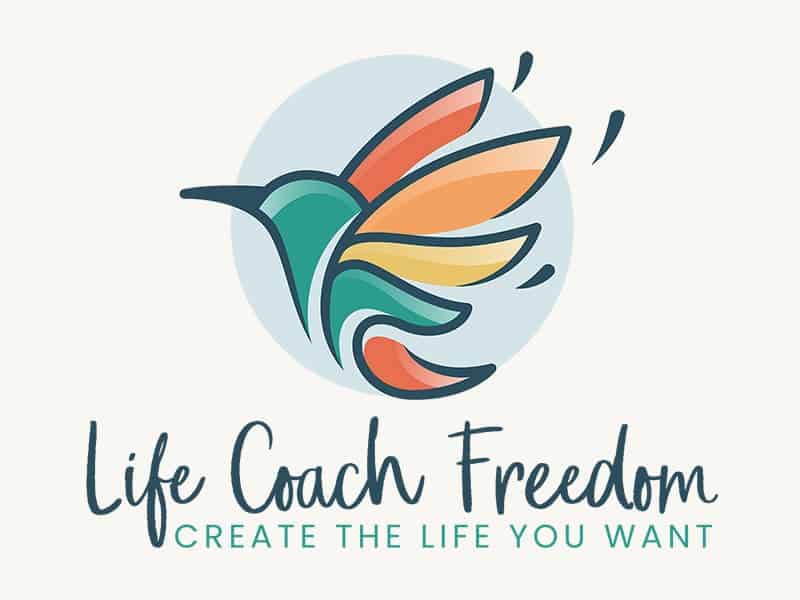
If you have a logo that is vertically large, consider having an “inline version” of it created. Take this great example from Life Coach Freedom. The original logo design is quite “square” in its layout.
So, a horizontal “inline” version was also created specifically for usage in narrow areas like the website header.

You want website visitors to stay on your site as long as possible (to improve your bounce rate). They can always visit your social pages after they have consumed your more important website content.
So, when a site visitor is ready to take action, you want to make it as easy as possible for them to do so. It’s ok to be creative in other areas, but when it comes to helping people navigate your site, don’t make them think any longer than they have to!
The top of the page (hero area) is the first thing people see when they land on your homepage or landing page. It needs to have a compelling headline that communicates your value proposition to engage visitors so they stay and consume more content.
If what you offer and why they should care isn’t obvious, they will leave. It’s that simple.
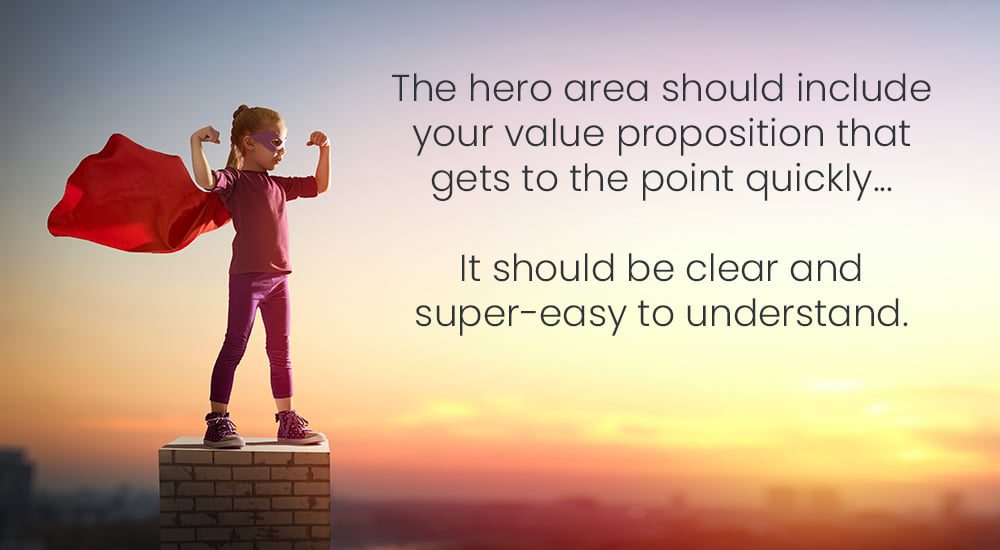
Here’s a simple formula you can use to get started:
We {do what} {for whom} {with this benefit}
This is where you start talking about the services you offer and expand on your unique value proposition.
Now that you’ve got their attention with your engaging hero area, this section is all about drawing them in further. Showing your site visitors that you really understand their problems, and addressing their common concerns. Then, highlight how you solve these problems and what they will gain as a result of working with you.
Try not to include too many services here. Focus on your signature service, or at most, 3 to 4 of your primary services. You can go into more detailed information about your product or service within your services pages.
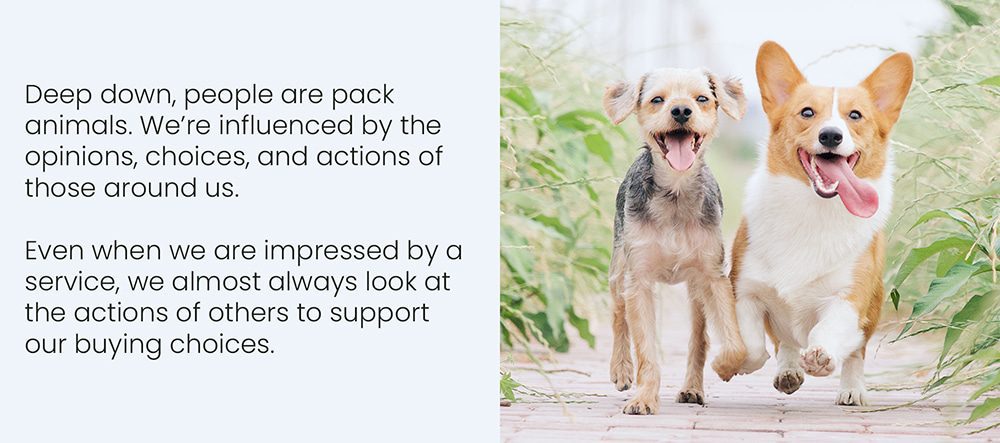
Without social proof, your site will lack the evidence required to trigger the psychology needed for your customers to feel comfortable buying. In short, having social proof is one of the key factors that contribute to creating a high-converting homepage.
Social proof can be achieved in a number of ways. Here are the most common:
“Research shows that 91% of people regularly or occasionally read online reviews, and 84% trust online reviews as much as a personal recommendation.” – INC.com
Seeing how other people have benefited from your services is a great way to support the promises & claims you have made. Here’s how to optimise your customer testimonials:

Have you managed to reach any milestones or achievements? If so, show them off! Showcasing any achievements you’ve had is another effective way to set your business apart and add more credibility to your brand. You could include:
These are another great option and there is a heap of different ways you can do it depending on your coaching niche. Here are some ideas:
This is your opportunity to tell your audience who you are, and what qualifies you to help them.

First-time visitors are only at the awareness stage, so they are extremely unlikely to part with their hard-earned money on the homepage. More time is needed to nurture your leads through the sales journey.
So, at this early stage, what else can you offer them to build on the relationship? What action would you like them to take next?

Most commonly, your primary CTA will be for visitors to book a free consultation with you. Or, to opt-in to your lead magnet.
Being at the very bottom of the page, the poor footer section is often overlooked. The thing is though if visitors are given a reason to scroll, they will! So your footer deserves just as much attention as the elements above it.
Your social pages are another great avenue for developing know, like and trust, and to build credibility. As discussed above you don’t want them anywhere near the top of your page. The point is to keep visitors on your website as long as possible. So the footer is a much better location for them.
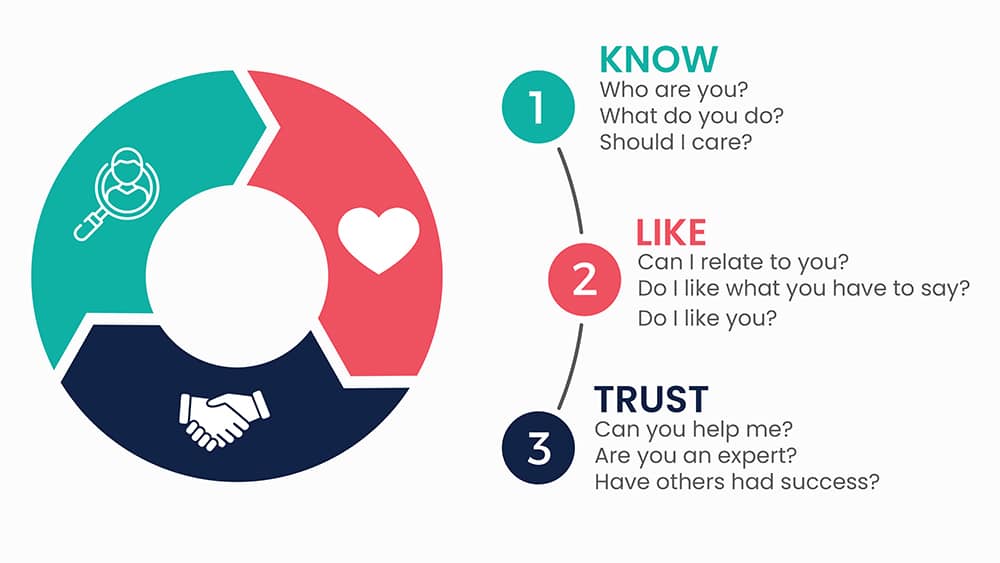
Be sure to set your social links to open in a new window rather than the same one, so they still have your website open in a tab and can come back to it easily.
Either in or just above your footer is a great place to have your Newsletter opt-in.
Back in the day when getting emails was exciting and our inboxes weren’t filled with spam, capturing leads and more customers was easy. Today though, people are less willing to part with their details. They have to feel confident that there’s something of great value in it for them.
So, instead of just having a newsletter opt-in to “stay up to date with your latest news” – try to offer more incentives. Exclusive information, upcoming promotions, or a prime example would be in exchange for your lead magnet.
Every page on your website should have a CTA and I trust you have already covered your primary CTA for the homepage, but you can pop a secondary CTA in your footer too. This is particularly handy as it is accessible on every page of your site.
For example, you can remind them of and link to your main CTA. Or, use cta buttons to link to your contact page or booking form.

Your website is a tool that represents your business online and connects you with your audience. So who are you hoping to reach? Who are your ideal customers?
If you don’t have complete clarity on who your ideal customers are, you’ll never know what they really need, let alone how to write compelling content that resonates and results in more sales.
So, before writing any copy for your homepage, I strongly encourage you to get crystal clear on your ideal customers. It literally forms the foundation of ALL your marketing efforts (website copy, content marketing, lead magnets, social media advertising, you name it!).
So, if it’s not on point, you’re really limiting your potential for everything else that follows it. I’ve already written an article about this which will help get you started:
The homepage is an overview of your business – the primary purpose generally being to draw people in, not overwhelm them with too much information.
It should be a “taste” of each of the other internal pages and act as the proxy for checking out the rest of the website.
We’re dealing with web design so some tech stuff is unavoidable. Essentially, you need to make sure your website’s usability is good.
There’s nothing more frustrating than a poor web design that has broken elements, is difficult to navigate, or is really slow. People have very little patience with this.
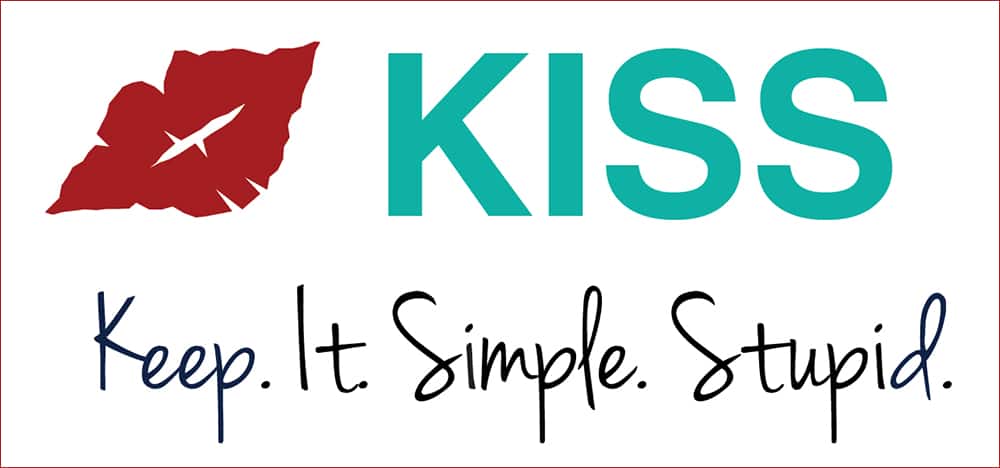
Combined with nailing the other features of your site, having compelling copy is crucial for your digital marketing so you can reach your target audience and boost conversions.
If you can invest in a copywriter to help, great! If not, you don’t have to be a professional writer to create effective content. You just have to follow some simple guidelines. Here are some quick tips:

The images you use on your homepage (and the entire website) can greatly impact the perception you give to your site visitors.
If they are pixelated and of low quality, that can translate to a perception of you have poor-quality services too. On the flip side, if you use good-quality images, that can leave a positive impact and result in a high-converting website.
Regarding videos, current trends have shown a consistent increase in video consumption over the last few years. The value they provide in your digital marketing campaigns can be great. It’s also an effective way to deliver lots of information quickly and stand out from your competition.
If you can’t check everything off in this guide, thank’s ok! For example, perhaps you’re just starting out and only have 1 or 2 testimonials, or maybe none at all. Don’t stress. We all have to start somewhere, but at least you can make a start!
Also, get your head around the concept that your homepage and website as a whole will NEVER be done. Websites are not meant to be static, they need to be constantly evolving. So, factor in some regular time in your schedule to work on it.
I know this was a long read so if you made it this far, you’re awesome! Now, as promised, here’s a handy checklist that summarises the elements above.

I hope you’ve gained plenty of takeaways that you can start implementing into your own web design straight away and see your conversion rates skyrocket!
So now that you have consumed all of these gold nuggets… Make sure to remember:
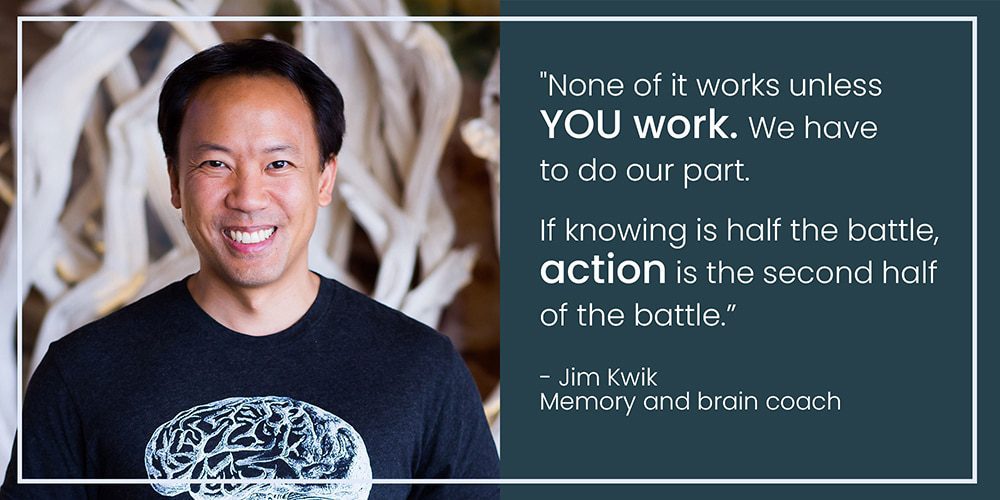
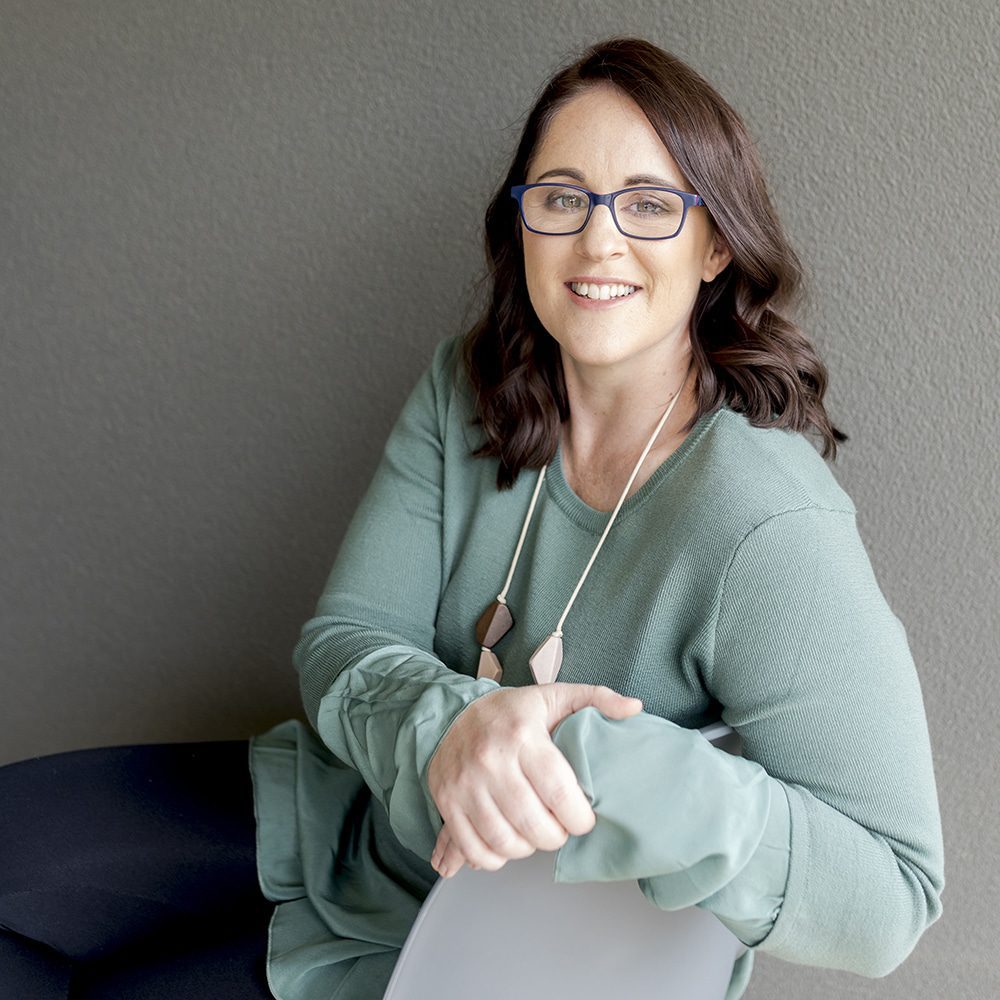
High-converting websites for coaches are my zone of genius. You don’t have to let a poor-performing website stop you from building your dream coaching business.
So if you want to remove the overwhelm, tech headaches & hefty price tags that often go hand in hand with web design and create a high-converting website that works… I would love to hear from you!
Take a look at what I do here: Coaching websites that work.
All the best!
Libby Hogan,
Digital Resource Specialist
Life Coach Freedom
If you’re passionate about coaching and hungry for valuable insights, expert tips, and the latest updates, look no further! Subscribe to our newsletter for exciting updates and subscriber-only discounts, promotions & resources.
"*" indicates required fields
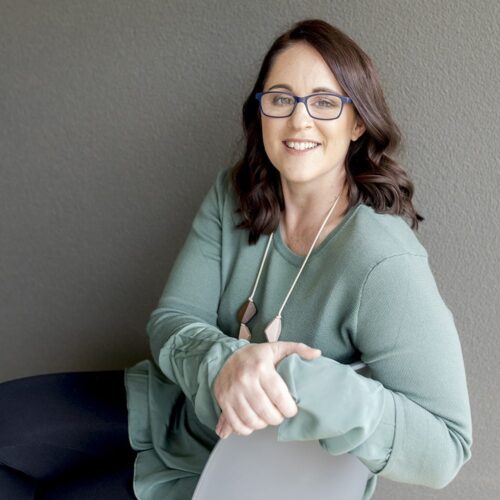
Hi there, I'm Libby
The creative mind behind Life Coach Freedom
My ultimate goal is to help you ditch the drama around running your coaching business, enabling you to reach more clients and cultivate both a fulfilling & thriving practice. And in doing so, have a successful business that gives you the freedom to create the life you want.
I trust you will find the articles on this page useful, and if there’s a topic you would like to know more about, I would love to hear from you!
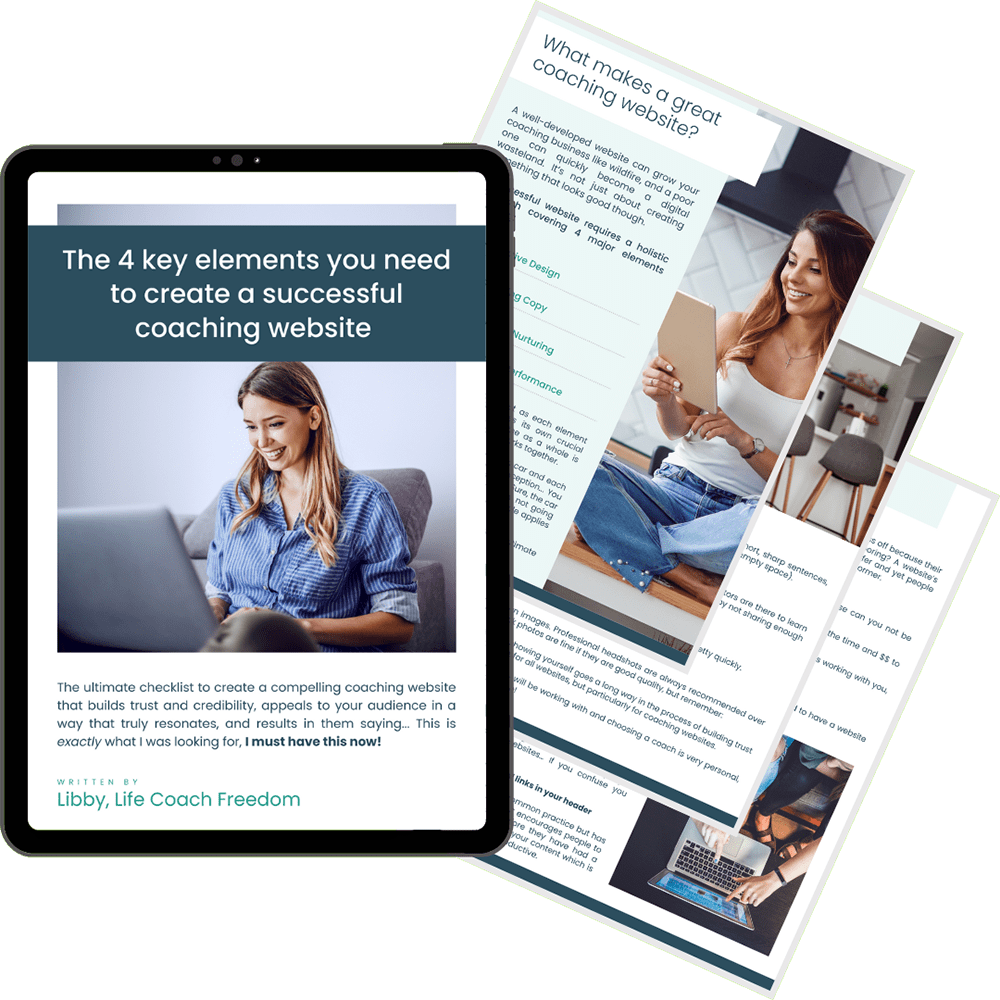
Free Download!
The 4 key elements you need to create a successful coaching website
"*" indicates required fields
Related Posts

Discover the 10 essential elements for crafting standout life coaching websites that not only attract visitors but convert them into clients.

Explore the significance of self-care for life coaches and learn how to implement actionable strategies to prevent burnout & achieve lasting success.

Discover the power of productivity tools in your coaching journey! Get organised, save time, simplify tasks, boost client interactions, and grow your business.

Life Coach Freedom offers done-for-you coaching tools, templates and niche websites to help you build a successful coaching business. Our ultimate goal is to save you time, money & energy so you have the freedom to create the life you want.
Handy Links